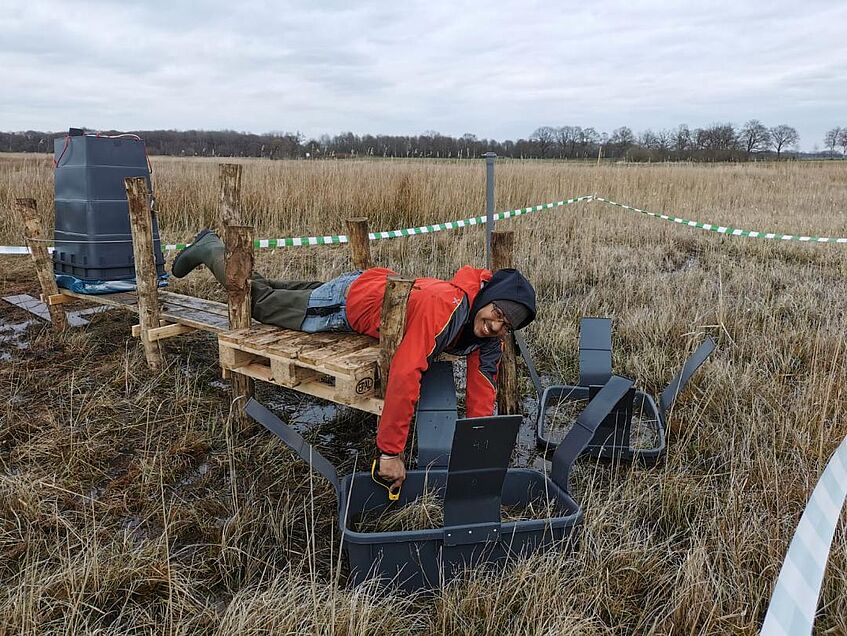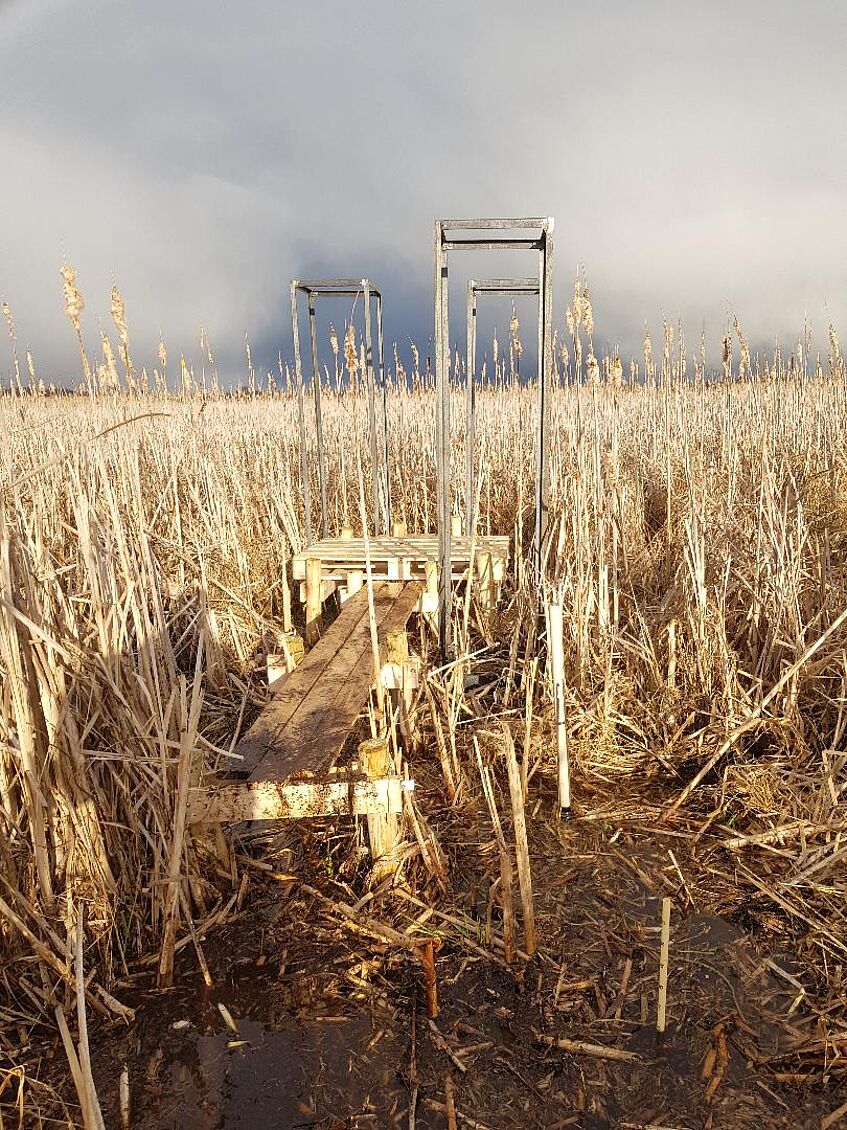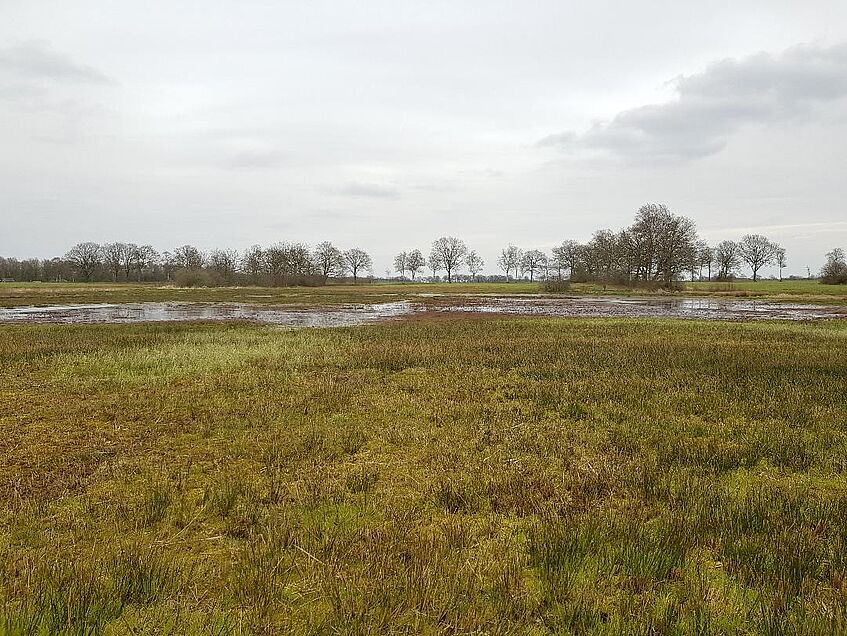PRINCESS project (Peatland Rewetting In Nitrogen-Contaminated Environments)

Installation of GHG chambers at the research sites during a field campaign in early April 2021. © Kathatina Laage

High nitrogen study sites are dominated by Cattail (Typha latifolia). © Stephan Glatzel

A predominantly sedge dominated fen in Drentse Aa, Holland. © Kyle Boodoo
PRINCESS project (Peatland Rewetting In Nitrogen-Contaminated Environments)
Can the rewetting of drained, nitrogen contaminated peatlands reduce EU-wide greenhouse gas emissions and improve wetland biodiversity?
Peatlands represent 2.5% of all agricultural land in the EU, but ~ 25% of agricultural greenhouse gas (GHG) emissions, and ~ 5% of total EU-wide GHG emissions. The rewetting of peatlands has been found to reduce, or even reverse, carbon dioxide (CO2) and nitrous oxide (N2O) gas emissions, the most common and potent GHGs respectively. Researchers in the PRINCESS project (Peatland Rewetting In Nitrogen-Contaminated Environments) are investigating ways to reduce these emissions, while simultaneously decreasing nitrogen (N) pollution and restoring wetland biodiversity in previously drained peatlands.
But reducing GHG emissions from peatland agricultural land it is not so simple, because rewetting can potentially increase the production of another potent GHG - methane (CH4), particularly under certain environmental conditions, such as high nitrogen levels in soils – which typically occurs in fertile paludiculture environments. Re-wetting may also limit the crop type that can be grown, and the productivity and income of persons involved in paludiculture. Therefore, the scientist in the PRINCESS project seek to find a way to reduce both the GHG emissions and nitrogen levels in these peatlands, while not significantly impacting the income and livelihood of persons actively involved in paludiculture.
PRINCESS brings together a diverse team of EU-scientists from the Uni. Vienna, Uni. Greifswald; Uni. Antwerp; Uni. Warsaw; Norwegian Institute of Bioeconomy Research (NIBIO); Luonnonvarakeskus (LUKE). The study will investigate the effect of different nitrogen and water levels, and environmental parameters on greenhouse gas (GHG) emissions from wet agriculture and forestry peatlands (paludiculture), as well as natural sites across the EU (Poland, Germany and Netherlands).
The investigations of the Uni. Vienna’s Geoecology team (S. Glatzel, K. Boodoo, & K. Fischer) will focus on measuring GHG emissions in the field and predicting GHG emission levels under different nitrogen and water level scenarios. Monitoring GHG emissions from the studied peatlands, along with a range of climate and soil parameters over the course of two years will allow the researchers to model GHG emissons and determine the impact of re-wetting of peatlands under different re-wetting, N-level and climatic scenarios. To do this, the team will use large gas flux chambers placed over the sedges/reeds in the peatland, directly measuring the rate of GHG emission to the atmosphere. Such an understanding would allow for the manipulation of paludiculture and wetland management methods to reduce GHG emissions, achieving the main goal of the project – reduction of EU-wide GHG emissions from peatlands.
Project duration: Since 01.01.2021 for three years
Project partners: Uni. Vienna, Austria (S. Glatzel, K. Boodoo); Uni. Greifswald, Germany; Uni. Antwerp, Belgium; Uni. Warsaw, Poland; Norwegian Institute of Bioeconomy Research (NIBIO), Norway; Luonnonvarakeskus (LUKE), Finland
Project homepage: www.princess-project.com
Funded by: FWF (BiodivClim ERA-NET COFUND Action on Biodiversity and Climate Change)
Media: STANDARD article "The underestimated role of peatlands in climate change" : https://www.derstandard.at/story/2000136190091/die-unterschaetzte-rolle-der-moore-im-klimawandel?ref=rss
